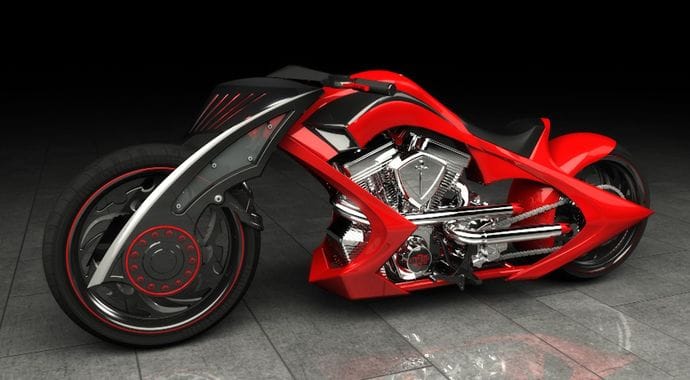Keen cyclist — and V-Ray for Modo user — Brendan McCaffrey knows bicycles inside out. We discuss rendering two-wheelers for The Complete Bike Owner’s Manual.
Brendan McCaffrey knows his way around V-Ray for Modo as well as he knows his way around the streets of his adopted home of Gran Canaria. This versatile 3D artist and illustrator — and passionate cyclist — has created key art for Need for Speed: Payback, helped visualize Anki’s toy cars and robots, and modeled everything from headphones and helmets to heroes and Hydrae.
He was a natural choice for publishing company DK when it came to illustrating The Complete Bike Owner’s Manual. This detailed guide breaks up the anatomy of the bicycle with over 600 CG shots to show home mechanics how it all works.
Fresh from his inspirational presentation at Total Chaos earlier this year, we had a chat with Brendan about how he shifted his renders up a gear.

How did you get into 3D?
Back in 1995, I got my first internship at a computer graphics company in Galway, Ireland and I got hooked on it. I was studying industrial design at the time, but I found a real affinity with 3D and visualization generally and I directed my career in that path. I went from industrial design and engineering to architectural visualization and then to more hardcore illustration.
.jpg?1545172244)
Could you tell us how the DK project came about?
I got involved through personal work; I cycle a lot and I've also been really interested in bike mechanics since I was a kid. I created a model of a bicycle to learn 3ds Max. That's also how I learned about HDR Light Studio because they contacted me and asked me to work on their beta.

That image has been very important for me because it has led to not just the DK project, but several other big projects in the last few years — basically using the same model. Pro tip: personal work sometimes pays off!
I think I've probably gotten as much out of that model as possible. I think the DK project was a culmination of that particular vein. I don't think I'll do another bike project quite on the scale of the DK books project, but that doesn't mean I'm not going to model another bike or explore other things.

How do you approach lighting and rendering a bike compared to something like a car?
A car is a big volume, but a bicycle is a bunch of very small, long volumes. So what works for a car won't necessarily work for a bike. You have to start thinking about it in terms of forms and shapes — a bike is a lot of little cylinders. And you always have to look at the focus.
For example, in one particular image, you have a cross-section of the sprocket system and the hub of a bike. The hub forms the main cylinder, so you have to think about that cylinder first with your main lighting and describe the form of that cylinder. All of the other parts of the bike are secondary, but you still have to light those forms in a way that clearly communicates what they are. You can either use a combination of light linking or you can add additional light with lower values in order to model them.

Bike components can be pretty complex — how do you research them?
I have a big collection of bike parts, so it was easy to just cut them up, measure them, and then it was a simple extrapolation. Even though we needed to have something that was technically correct, it didn't need to be engineering correct; it didn't necessarily need a level of tolerance or level of accuracy that you would need in a proper design project.

What do you like about V-Ray?
What's not to like!? If you break it down, V-Ray is the ultimate artist's tool. I've used plenty of renderers in the past and it was a constant struggle to get clean images; I found myself doing a lot of work just to get a technically clean image and that takes time away from creative development. So if you have a tool that basically is a one-click solution, then you're onto a winner.

And what’s your favorite bike material?
That's an awful question! Steel is real, they say. Carbon fiber is great for comfort, for lightness. Aluminum is probably my least favorite. Titanium is what I want, what I aspire to. I have a carbon bike.
Want to know more about Brendan? Take a look at his Total Chaos presentation below, feast your ears on this podcast with HDR Light Studio and check out his Artstation for his work on Need for Speed: Payback, Star Wars: Battlefront — and even more bikes!




